Martin Prado is day-to-day with a “mild, mild” left hamstring strain, Joe Girardi announced. Prado will not play tonight and he is unlikely to play tomorrow, but he could be good in time for Friday’s series opener against the Royals. He left last night’s game with tightness in the hamstring and had an MRI today. Prado has been one of the team’s best hitters these last few weeks, so losing him hurts.
Update: Martin Prado headed for MRI on tight left hamstring
11:20pm: Prado has been preliminarily diagnosed with tightness in the hamstring, the Yankees announced. He’ll head for an MRI next.
10:43pm: Martin Prado left tonight’s game with a left hamstring injury, according to the army of beat reporters with the team. He will see the doctor tonight. No word on the severity or anything like that, but we’ll find out soon enough.
Trade deadline additions yet to have an impact offensively

Heading into the trade deadline, it was clear the Yankees needed to upgrade their lineup and their rotation. The pitching help never came, at least not in the form of something other than a scrap heap pickup, but the team did add three position players at the deadline. Chase Headley was acquired to shore up third base, and, about a week later, Stephen Drew and Martin Prado were brought in for second base and right field, respectively.
The Yankees were getting close to nothing from those three positions before the trade deadline. The team’s third basemen hit .224/.321/.301 from June 1st through the Headley trade while their second basemen and right fielders hit .204/.259/.319 and .228/.254/.290, respectively, in June and July before the Drew and Prado trades. That’s pretty awful. The Yankees had (at least) three dead spots in the lineup for a two-month stretch and something had to be done. That couldn’t continue.
Headley, Drew, and Prado stepped right into the lineup and immediately improved the team’s defense even though the latter two were playing out of position. Surely the focus was on upgrading the offense, but improve the defense was also important and the Yankees accomplished that with the trades. The offensive production has not been there yet, at least not from Drew and Prado. Headley is hitting .250/.354/.382 (110 wRC+) in pinstripes and it would be unfair to lump him in with the other two. He hasn’t been great with the bat but he hasn’t been part of the problem either.
Drew and Prado, however, has been totally unproductive in their limited time with the Yankees. Drew is hitting .154/.195/.231 (12 wRC+) in 41 plate appearances so far, and two of his three hits (!) came in his first two games with the team. He’s gone 1-for-28 with no walks since. He has consistently had long at-bats (4.12 pitches per plate appearance) but, as we saw with Brian Roberts, that is close to meaningless if those at-bats don’t turn into times on base. He’s been very good defensively in my opinion, especially since he’s playing a new position, but that hasn’t been enough.

Prado, on the other hand, is hitting .189/.250/.297 (51 wRC+) with a homer in 40 plate appearances with the Yankees. He took David Price deep a week ago and has three singles with no walks since. Prado wasn’t hitting much with the Diamondbacks before the trade (89 wRC+), though he was trending in the right direction, with a .282/.326/.411 (103 wRC+) batting line in the two months prior to coming to New York, but he has not sustained that success in pinstripes. I don’t think anyone was expecting peak Prado, when he was consistently a 117+ wRC+ player with the Braves, but I think we were all hoping for something better than this.
Now, both Drew and Prado are playing new positions and that could be hurting their offense. Drew didn’t have a proper Spring Training and Prado is also changing leagues. If nothing else, those are reasons to hope they will improve going forward. Not hitting since joining the Yankees doesn’t mean they will not hit forever, but these last eleven games or so happened. They’re in the books and neither player has helped the struggling offense. The Bombers averaged 4.01 runs per game before the trade deadline and they’re at 3.82 runs per game since. Obviously facing Corey Kluber and Detroit’s staff last week will skew the numbers a bit, but Bud Norris? Carlos Carrasco? Anthony Ranaudo?
The Yankees lack a bonafide number three or four hitter in the wake of Robinson Cano’s departure and that type of hitter simply wasn’t available at the trade deadline. The team was going to have to get by with smaller upgrades to add depth to the lineup, and the Drew and Prado additions theoretically did that. They have yet to hit though, failing to meet the low “better than Roberts and Ichiro” standard this far. The Yankees don’t have the pitching or the impact hitters at other positions to continue carrying multiple dead spots in the lineup. Drew and Prado have to start producing for the team to have any hope of climbing back into the postseason race.
Heyman: Gardner, Prado, Drew all clear trade waivers
Via Jon Heyman: Brett Gardner, Martin Prado, and Stephen Drew all cleared trade waivers this month. That means they can all now be traded to any team. It doesn’t mean the Yankees want to move them, of course, but they can if they want. The Nationals claimed Matt Thornton off trade waivers the other day and the club let him go for nothing.
As a reminder, teams will pass almost all of their players through trade waivers this month. They are completely revocable, so players can be pulled back if claimed. Most of the time they try to hide a player they’re looking to move by putting a whole bunch of players on waivers on the same time. The Yankees figure to claim a player or three this month if for no other reason than to block them from going to one of the teams they’re trying to catch in the standings. I’m surprised no one claimed Gardner.
Yankees send Zoilo Almonte and Zelous Wheeler to Triple-A
As expected, the Yankees have sent outfielder Zoilo Almonte and utility man Zelous Wheeler to Triple-A Scranton. The moves clear room on the active roster for Stephen Drew and Martin Prado. The Yankees still need to clear a spot for righty Esmil Rogers, who is joining the bullpen. Chase Whitley is a candidate to be sent down, where he would be able to stay stretched out as the de facto sixth starter. We’ll find out soon enough.
Update: Disregard, I’m an idiot. Brian Roberts being designated for assignment clears the roster spot for Rogers, so the Yankees are carrying eight relievers at the moment.
Yankees acquire Martin Prado for Peter O’Brien
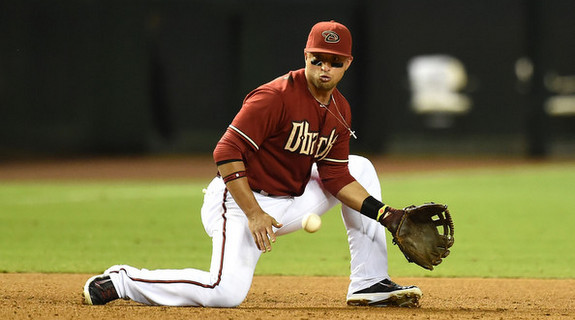
For the second time this month, the Yankees and Diamondbacks hooked up for a trade on Thursday. New York acquired the versatile sometimes infielder, sometimes outfielder Martin Prado from Arizona in exchange for minor leaguer Peter O’Brien, the club announced. The two teams got together for the Brandon McCarthy/Vidal Nuno swap a few weeks ago.
Prado, 30, is hitting .270/.317/.370 (89 wRC+) with 17 doubles and five homers in 436 plate appearances this year. He put up a .282/.333/.417 (104 wRC+) batting line with the D’Backs last season after being acquiring from the Braves as the centerpiece of the Justin Upton trade. Prado rarely walks (5.3% this year, 6.3% career) but he is a high-contact hitter (13.1% strikeout rate this year, 10.7% career) who has mashed lefties both this year (140 wRC+) and throughout his career (119 wRC+). The Yankees are in desperate need of righty production and he’ll help fix that.
Brian Cashman told reporters Prado will see most of this time in right field, which makes sense. Stephen Drew was acquired to play second base and every other position on the field is accounted for. Prado has only played two career innings in right but he has a ton of experience in left, so the outfield will not be completely foreign to him. With Brett Gardner and Jacoby Ellsbury running down everything in a two-mile radius (give or take), not to mention a ground ball pitching staff, they can hide a below-average defender in Yankee Stadium’s small right field in exchange for more offense.
Prado has played primarily third base over the last two seasons, though he has spent considerable time at second as well. He can fake shortstop and even first base if needed. Hopefully it doesn’t come to that. Here’s a snippet of what I wrote about Prado in our Scouting The Market post a few weeks ago:
Arizona gave Prado a four-year extension worth $40M last spring. He is owed about $5M through the end of the season plus $11M in both 2015 and 2016, so he and (Aaron) Hill have basically identical contract situations. If he was producing like regular old Martin Prado, it would be more than a fair wage. Since he is having a down year and it’s unclear if there is something more to it than just the general ups and downs of baseball, it’s a bit more scary.
There are no significant red flags in Prado’s batted ball or plate discipline data, which is a good thing. You want him to be the same player he was for most of his career. That makes me more hopeful the poor start to his season — he has hit .282/.326/.411 (103 wRC+) over the last two months, for what it’s worth — is just one of those things and not the first step off the cliff. As they did with the McCarthy and Chase Headley pick ups, the Yankees traded for Prado when his value was down, except he’s under contract for another two years (age 30-32 seasons).
O’Brien, 24, was the Yankees’ second round pick in the 2012 draft out of Miami. He is hitting .267/.312/.593 (147 wRC+) with 33 homers in 413 plate appearances split between High-A Tampa and Double-A Trenton this year. Only two players in the minors have hit more homeruns this season. O’Brien was the team’s top power prospect but there are also significant concerns about whether the holes in his swing and plate discipline issues will allow him to tap into that power at the next level — his 106/20 K/BB tells the story. He also doesn’t have a position, bouncing from catcher to third base to right field to first base since being drafted. With Paul Goldschmidt entrenched at first in Arizona, O’Brien will have to make it work elsewhere. That’s not the Bombers’ problem, obviously.
Acquiring Prado helps the Yankees both in the short and long-term, potentially. He steps into right field this year and going forward they could play him at second or third base, depending on the rest of the roster. Prado won’t block a youngster like Rob Refsnyder if they force their way onto the roster and he gives the team some protection at third given the uncertainty of the whole Alex Rodriguez situation. If Prado hits the way he did just last year, not even during his best years with the Braves, this is solid move to bolster the roster at a more than reasonable cost. Prospects like O’Brien are as tradeable as it gets.
Scouting The Trade Market: D’Backs’ Position Players
Thanks to baseball’s general mediocrity, the Yankees remain in the postseason hunt — they come into today 3.5 games back of both the top spot in the AL East and the second wildcard — but there’s little chance they will play in October without getting help at the trade deadline. They already acquired Brandon McCarthy, but that move alone isn’t putting them over the top. They need more help, both pitching and offense.
We know the Diamondbacks are ready to sell because they’ve started doing it already. It’s not just the McCarthy trade, they also dealt Joe Thatcher and Tony Campana over the weekend. Last week we looked at the pitchers they could peddle (pre-McCarthy deal), and now it’s time to look at the position players. Remember, just because the Yankees and D’Backs have already gotten together for one trade this month does not mean they can’t hook up again.
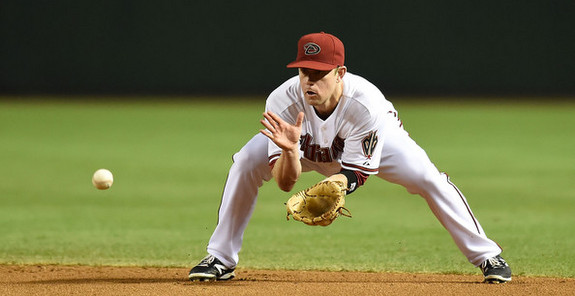
2B Aaron Hill
Hill, 32, has been one of the most productive second basemen in baseball over the last few years, at least on and off. He hit .298/.359/.501 (129 wRC+) with 37 homers in 243 games from 2012-13, but this year he’s dropped down to .239/.275/.356 (70 wRC+) with six homers in 85 games. It’s not the first time Hill has had this kind of drop-off either. He went from 36 homers to almost being designated for assignment while with the Blue Jays back in the day.
Hill’s strikeout rate (17.5%) is way up and his walk rate (4.3%) is way down this year (13.0 K% and 7.9 BB% from 2012-13), though his plate discipline stats are right in line with the last few years. He isn’t swinging more or less often, either at stuff inside or outside the zone, which suggests his strikeout and walk numbers may return to his career norms in time. Maybe he’s offering at more pitchers’ pitches, but the plate discipline numbers don’t come with any red flags. It’s weird.
The biggest concern with Hill is that his power is way down. He had a .203 ISO from 2012-13, but is down to only .117 this year. Again, his batted ball profile is right in line with the last few years, so there are no red flags there, and batted ball distance data shows he is hitting the ball just as far this year (on average) as the last few seasons:
 I’m not quite sure how the explain the poor strikeout, walk, and power numbers, which is not necessarily a bad thing or a good thing. It could be a indication he is having an unlucky year — I think the word “luck” has jumped the shark in baseball, but it still exists, sometimes guys have bad years or no real reason — and will bounce back in the future, or it could be a sign there is some kind of mechanical/swing issue we can’t detect with the stats. That’s much more problematic.
I’m not quite sure how the explain the poor strikeout, walk, and power numbers, which is not necessarily a bad thing or a good thing. It could be a indication he is having an unlucky year — I think the word “luck” has jumped the shark in baseball, but it still exists, sometimes guys have bad years or no real reason — and will bounce back in the future, or it could be a sign there is some kind of mechanical/swing issue we can’t detect with the stats. That’s much more problematic.
The Diamondbacks bought into Hill’s huge 2012 season (132 wRC+) and gave him a three-year, $35M extension the following spring. He is owed approximately $5.5M through the end of the season plus $12M in each of the next two seasons. If he was still mashing 20+ homers with a 120+ wRC+ and average defense at second, it would be more than a fair salary. But he’s not doing that anymore. Hill’s production has fallen way off and he is at that age when second basemen tend to fall off a cliff.
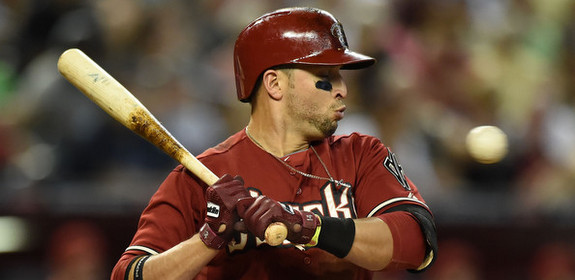
IF/OF Martin Prado
Like Hill, Prado’s production has fallen off this season after very successful 2012-13 campaigns. The 30-year-old hit .292/.346/.427 (111 wRC+) with 24 homers and 20 steals in 311 games from 2012-13, though this year he is at .268/.313/.365 (86 wRC+) in 89 games. His strikeout (13.9%), walk (4.9%), and plate discipline numbers are right in line with the career averages, though he is hitting a ton more grounders (53.8%) and that has sapped his power (.097 ISO).
Now Prado is not much of a power hitter to start with, at least not over the fence power. He’s usually good for 10-15 homers per season, though he’ll also chip in 30+ doubles per year as well. This season he has four dingers and only 13 two-baggers. It’s fairly common for contact hitters to start beating the ball into the ground when they decline, but Prado seems a little too young for that. A half-season of batted ball data is hardly enough to conclude he’s in irreversible age-related decline.
As you may know, Prado has always stood out for his versatility. He has a ton of experience at second base, third base, and in right field. He’s also filled in at shortstop, right field, and first base on occasion. The various defensive stats say he’s a tick above average at third and in left but slightly below average at second. Hill has been a second baseman exclusively for about eight years now, so while Prado can not match his over-the-fence power ability, he makes up for it by being able to play more positions competently.
Arizona gave Prado a four-year extension worth $40M last spring. He is owed about $5M through the end of the season plus $11M in both 2015 and 2016, so he and Hill have basically identical contract situations. If he was producing like regular old Martin Prado, it would be more than a fair wage. Since he is having a down year and it’s unclear if there is something more to it than just the general ups and downs of baseball, it’s a bit more scary.
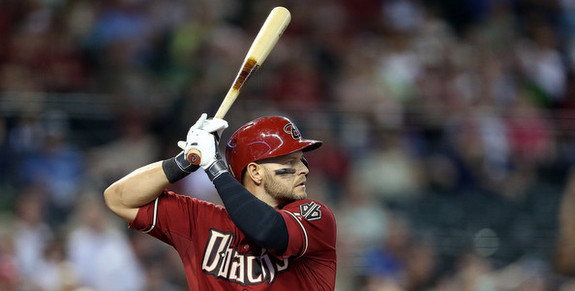
OF Cody Ross
The Yankees have received only 15 homers from right-handed hitters this year, six by the departed Alfonso Soriano. They went into last night’s game hitting only .257/.321/.375 (92 wRC+) against lefties this season. That’s pretty terrible. The need for another right-handed power bat is pretty obvious.
Ross, 33, dislocated his hip (!) running through first base last August, an injury that required surgery and kept him on the shelf at the start of the season. He returned in mid-April and has hit .224/.278/.279 (53 wRC+) overall, including .260/.327/.260 (67 wRC+) against lefties. Before the injury, Ross put up a stout .339/.399/.612 (170 wRC+) batting line with 16 homers in 242 plate appearances against southpaws from 2012-13. Considering he is coming off the hip injury and has nearly twice as many plate appearances against righties (103) than lefties (55), this year’s poor performance isn’t all that surprising.
The D’Backs gave Ross a three-year deal worth $25M two winters ago, so he is owed approximately $4.5M through the end of the season plus another $9.5M in 2015. That’s pretty pricey for the right-handed half of a right field platoon, no? Maybe Arizona would be willing to eat some money like they did with McCarthy. Ross can play all three outfield spots and is no worse than slightly below-average everywhere, which is neither good nor terrible. It’s tolerable. If you think he can get back to his 2012-13 form as he gets further away from the hip injury and are willing to live with that salary, Ross would make a lot of sense for the Yankees.
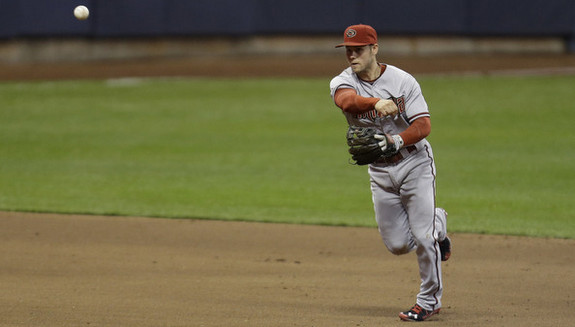
Young Infielders
In Didi Gregorius and Chris Owings, the Diamondbacks have two highly marketable young shortstops. Gregorius, 24, is hitting .222/.337/.389 (97 wRC+) in only 87 plate appearances this year after opening the season in Triple-A, where he had a 123 wRC+. Last season he hit .252/.332/.373 (91 wRC+) as the everyday shortstop. The book on him continues to be that he can legitimately play shortstop long-term, but his bat leaves a lot to be deserved.
The 22-year-old Owings took the shortstop job from Gregorius to start the year, though he has been sidelined by a relatively minor shoulder problem these last two weeks. He was hitting .277/.313/.458 (110 wRC+) with six homers in 254 plate appearances before the injury. Owings is considered a slick fielder like Gregorius, but he offers way more pop and impact potential with the bat. UConn product Nick Ahmed, 24, put up a 119 wRC+ in 336 Triple-A plate appearances before being called up the other day. He is the best defender of the trio but also likely the worst hitter despite his minor league numbers this year. That is an enviable group of young middle infields, no doubt about it.
* * *
Real talk forthcoming: if Hill and/or Prado were on the Yankees, we’d be talking about them as overpaid veterans who are part of the problem. But, because they’re on another team and the grass is always greener, they’re being looked at as possible solutions. I think versatility is overrated and would prefer Hill to Prado, especially given the team’s need for right-handed power, but I’m just not sure if he’s simply having a bad year or is starting to decline.
Hill had two and a half years left on his contract when he was traded from the Blue Jays to the D’Backs a few years ago, and all Arizona gave up was … Kelly Johnson. They bought really low and it has worked out wonderfully. (No, Kevin Towers probably will take Johnson back for Hill now.) Hill’s trade value figures to be a little higher this time around despite his performance, especially if Arizona is willing to eat some cash like they did with McCarthy, but I don’t have any idea what a reasonable package would be. Two good but not great prospects? Someone like Ramon Flores or Rafael DePaula? I’m not sure.
Ross is owed a ton of money relative to his role and the D’Backs would have to eat some to make a deal palatable. Even then they would have to take back very little, a player to be named later type. I greatly prefer Owings to Gregorius and especially Ahmed. Obviously adding Derek Jeter’s long-term replacement should be a goal for the Yankees in the near future. Players like Owings and Gregorius are usually dealt as part of a package for an established veteran, not by a team that is selling. Tough to gauge their market value. Arizona has some potentially useful position players for the Yankees, but for different reasons, it’s tough to pin down the exact trade value of each.